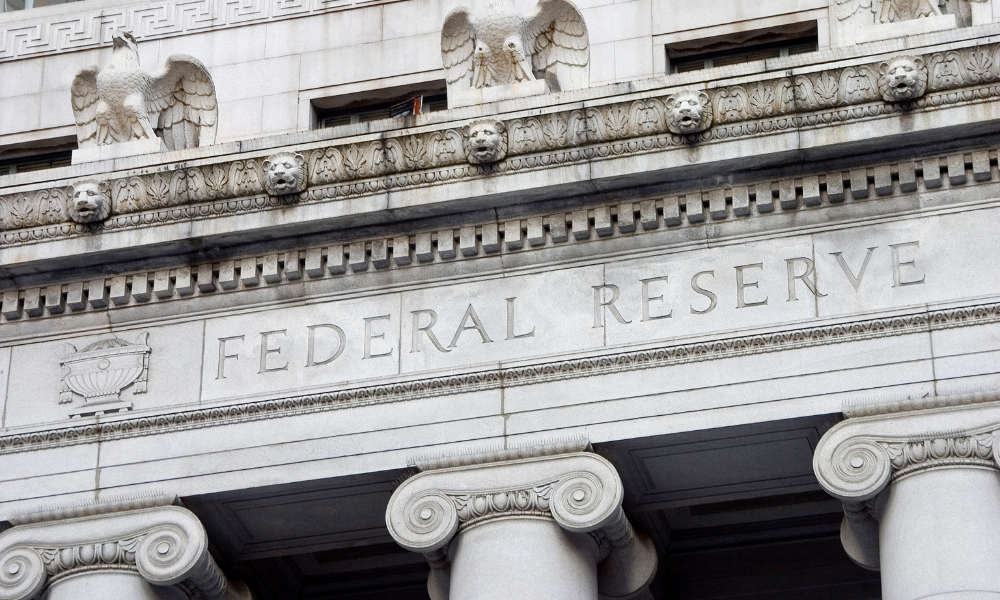

Deciding to hold interest rates steady was no real surprise, but the tone of Fed chair Jerome Powell, while calming, also left plenty of unanswered questions.
The dovish tone fueled a return to equities for many investors who were nervous even before the recent correction, and a drop for bonds with two-year yields down below 4%. The S&P 500 ended the session up more than 1% following the interest rate decision, the largest rise on any decision day since July 2024; the Nasdaq was up 1.4%; and the Dow Jones gained 0.92%.
Early Thursday, US stock futures were climbing by roughly one half of a percentage point for both the S&P 500 and the Nasdaq.
“As expected the Fed adopted a cautious tone at this month’s meeting, remaining on hold as it waits for clarity on the growth outlook and changes to trade policy,” Whitney Watson, global co-head and co-chief investment officer of Fixed Income and Liquidity Solutions within Goldman Sachs Asset Management told InvestmentNews. “Revisions to FOMC members projections had a somewhat ‘stagflationary’ feel with forecasts for growth and inflation moving in opposite directions. For the time being the Fed is in wait and see mode, as it monitors whether the recent growth slowdown develops into something more serious.”
But while the Fed may not have been pulling the alarm, it was certainly not signaling that the path ahead will be easy. And Powell cited “uncertainty” multiple times, something that did not go unnoticed by Jack McIntyre, portfolio manager at Brandywine Global.
“That term was peppered throughout both the FOMC statement and Powell’s press conference,” he said. “Therefore, it wasn’t a dovish or hawkish pause [on rates] but an uncertain pause. Rightfully so, the Fed has less conviction, but it is aligned with the market in their view of where policy rates are headed.”
The Fed chair said that there will likely be two Fed rate cuts in 2025, but while the markets expected more clarity on when rate cuts might happen, Powell kept options open, saying they need "greater confidence" that inflation is cooling.
And on the impact of tariffs on inflation, he brought back a word that proved overly optimistic in previous speeches.
“The use of the word ‘transitory’ related to tariff induced inflation is somewhat ironic given the previous criticism of the Fed believing that inflation after Covid was transitory due to supply chain constraints and the government stimulating consumption,” said Kevin Philip, a Partner at Bel Air Investment Advisors. “In a way, they may have been correct about their previous call, but it depends on what timeframe one believes is within the term ‘transitory’; is it no more than 18 months or no more than 3 years? It seems like with this current transitory call, we will have another chance to see.”
While markets rebounded Wednesday, the longer term outlook is less certain, but analysts have been predicting economic challenges in the months ahead.
But Josh Jamner, Senior Investment Analyst at ClearBridge Investments remains pragmatic.
“While the Fed dots implied that policymakers now anticipate a less favorable economic backdrop to unfold this year with modestly slower growth, higher inflation, and higher unemployment, these changes are consistent with estimates that have been circulating on Wall Street in recent weeks from banks and macroeconomic research boutiques and should not have a major impact on financial markets in our view as a result,” he said. “Ultimately, Fed policy is taking a back seat to the fiscal side of the equation, and with Fed Funds futures market pricing implying the next rate change not occurring until the late July meeting, this dynamic is unlikely to shift in the near term.”

After a two-year period of inversion, the muni yield curve is back in a more natural position – and poised to create opportunities for long-term investors.

Meanwhile, an experienced Connecticut advisor has cut ties with Edelman Financial Engines, and Raymond James' independent division welcomes a Washington-based duo.

Oregon-based Eagle Wealth Management and Idaho-based West Oak Capital give Mercer 11 acquisitions in 2025, matching last year's total. “We think there's a great opportunity in the Pacific Northwest,” Mercer's Martine Lellis told InvestmentNews.

Osaic has now paid $17.2 million to settle claims involving former clients of Jim Walesa.

Osaic-owned CW Advisors has added more than $500 million to reach $14.5 billion in AUM, while Apella's latest deal brings more than $1 billion in new client assets.
Orion's Tom Wilson on delivering coordinated, high-touch service in a world where returns alone no longer set you apart.
Barely a decade old, registered index-linked annuities have quickly surged in popularity, thanks to their unique blend of protection and growth potential—an appealing option for investors looking to chart a steadier course through today's choppy market waters, says Myles Lambert, Brighthouse Financial.
